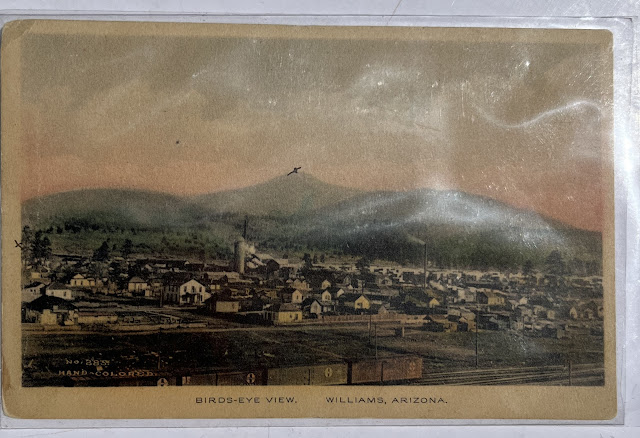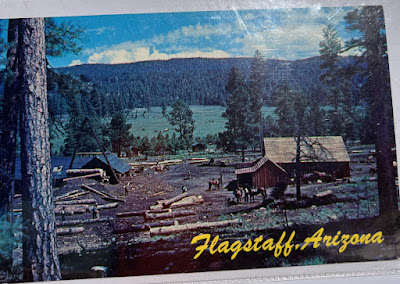Williams Arizona: Vintage Postcards
Although I have recently concentrated on the Saga of the Saginaw, this Blog also covers the history of Williams, Arizona. Someday, after some expert tutelage and earning an advanced degree in computers (or just learning by trial and error), I will reorganize the Blog into two sections. Until then, posts will be forthcoming in random order. After all, would you rather be following a Blog on the personal lives of narcissistic postings, or this one where you can learn something valuable and life-changing (maybe not the latter, but I can hope.)
Today, with the availability of the internet and texting on telephones (even that is becoming an archaic term), anyone can keep in contact with whomever else instantly throughout the world. At one time, communication was a somewhat more complicated process, involving the application of pen or pencil to paper. This was then neatly folded into an addressed envelope, stamped with the appropriate amount of postage, and sent through the mail to the patient recipient.
A postcard provided a faster means of communication at a cheaper rate. These simple mailable items were used by virtually anyone who were traveling to communicate with family or friends. A post card, literally a card that can be mailed, even had a reduced postage rate that provided additional incentive for travelers to keep in touch with those left at home. Today, old shoe boxes can be found at yard sales, stuffed full of treasured postcards that once provided the pleasure of old memories that might otherwise have been forgotten.
Letters and postcards have become an archaic means of communication. Although there are legions of older people (I, being one) who will still use this methodology for all sorts of mischief.
Studying old postcards can reveal a number of details that might have been otherwise lost to history. Those shoeboxes full of postcards are a valuable source of images and written information that provide clues to our past. The following are several examples that we shall consider in this posting. The two postcards of Williams were subjected to high resolution scans to help with my research. These images, however, are simple pictures of the cards. It seems that someone decided to replace their home printer with another brand that is not connected to the internet (it's just unnatural that a manufacturer can communicate with your printer and update the program without even paying a visit or asking first. Another courtesy that has become archaic.) In so doing, forgot to get a scanning printer; note to self, make list before purchasing a new printer.
This is an image of one of the private lumber mill operations near Flagstaff. View looks to the East, where Lake Mary will one day fill the valley floor. The distant hill forms a mesa, where one of the logging railroads built a set of switchbacks to reach the top. I included this image because I once visited this area, having no idea that a mill was located on this site. Nothing remains of the mill. Just a nice image of the forest, which has regrown from early logging, and a pastoral scene of the valley floor.







No comments:
Post a Comment